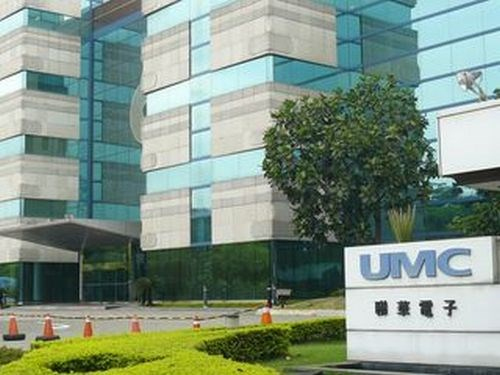Introduction
United Microelectronics Corporation (UMC), Taiwan’s second-largest contract chipmaker, clarified on Wednesday that it has no plans to establish new production facilities in the United States, despite increasing speculation regarding U.S. market pressures. The announcement came amidst reports suggesting that the company could face mounting pressure, especially with a potential return of U.S. President-elect Donald Trump to the White House in January.
UMC’s Stance on U.S. Expansion
Following reports from Mirror Media, a Taiwanese-language news outlet, UMC addressed rumors surrounding its potential investment in U.S. manufacturing. The report cited unnamed sources suggesting that with Trump’s return, UMC might come under pressure due to the U.S. being the largest semiconductor market in the world. Additionally, the report highlighted concerns over Trump’s tariff policies, which could encourage Taiwanese companies like UMC to consider setting up plants in the U.S.
However, UMC firmly reiterated its position that it currently has no intention of expanding its operations in the United States. The company emphasized that it was focusing its resources on its ongoing collaboration with U.S. chip giant Intel Corporation, which involves the development of a 12-nanometer semiconductor process platform. Production at Intel’s Ocotillo Technology Fabrication site in Arizona is slated to begin in 2027.
UMC’s Current Operations and U.S. Relations
In recent developments, the American Institute in Taiwan (AIT) posted on Facebook that AIT Director Raymond Greene had visited UMC. While this sparked speculation, UMC clarified that Greene’s visit was scheduled and did not indicate any change in the company’s strategy. UMC further mentioned that its discussions with Greene were focused on the company’s future growth strategies and industry topics.
UMC noted that its primary focus remains its ongoing work with Intel. The collaboration is expected to play a key role in the global semiconductor supply chain, especially for mature-node foundry services that are crucial for mobile devices, connected cars, and IoT applications.
U.S. and Taiwan’s Semiconductor Landscape
The semiconductor industry has become a focal point of international attention, particularly as Taiwan continues to play a central role in global chip production. While UMC is the fourth-largest wafer foundry globally, Taiwan Semiconductor Manufacturing Company (TSMC), the largest contract chipmaker, is investing heavily in the U.S. with a US$65 billion investment to build advanced semiconductor fabs in Arizona.
UMC, however, remains committed to its existing strategy, which does not include new plants in the U.S. This decision contrasts with the massive expansion plans of TSMC, which has already begun constructing two advanced wafer fabs in the U.S. and plans to build a third.
Key Data and Timeline
| Date | Event | Focus |
|---|---|---|
| January 2027 | UMC & Intel’s 12-nanometer platform production begins in Arizona | U.S. collaboration project |
| Ongoing | AIT Director Raymond Greene’s visit to UMC | Discussions on growth strategies |
| 2024 | UMC reaffirms no immediate plans to invest in the U.S. | Focus on Intel project |
Frequently Asked Questions (FAQs)
1. Why isn’t UMC planning to build a plant in the U.S.?
UMC has confirmed that it has no immediate plans to establish a production site in the U.S., focusing instead on its collaboration with Intel on a 12-nanometer semiconductor process. The company also remains cautious of the potential risks and political pressures tied to U.S. investments.
2. What is the U.S.-Taiwan semiconductor collaboration?
UMC is working with Intel on a joint 12-nanometer semiconductor platform, with production slated to begin at Intel’s Arizona facility in 2027. This collaboration highlights the growing partnership between Taiwan and the U.S. in the semiconductor industry.
3. What is the current status of UMC’s involvement in the U.S. market?
While UMC is not planning to set up new manufacturing plants in the U.S., it is actively involved in a key project with Intel, helping to shape the future of semiconductor manufacturing in North America.
4. How does UMC compare to other Taiwanese chipmakers like TSMC?
While UMC is a significant player in the global semiconductor foundry market, it is smaller than TSMC, which dominates the high-end chip market. TSMC has already begun large-scale investments in the U.S., whereas UMC has focused on its existing partnerships and global operations.
5. What role does the U.S. government play in the semiconductor industry?
The U.S. government has been actively encouraging semiconductor companies to invest in the U.S. as part of its strategy to secure a resilient and advanced semiconductor supply chain. This is reflected in the investment incentives provided to companies like TSMC and the attention directed toward UMC.
Conclusion
UMC’s decision to maintain its focus on existing projects, particularly its partnership with Intel, underscores its strategy of consolidating its position in the global semiconductor market without immediate plans for new plants in the U.S. As Taiwan’s semiconductor industry continues to evolve, the company’s careful approach in the face of international pressures highlights the complexities of global manufacturing and geopolitics.
